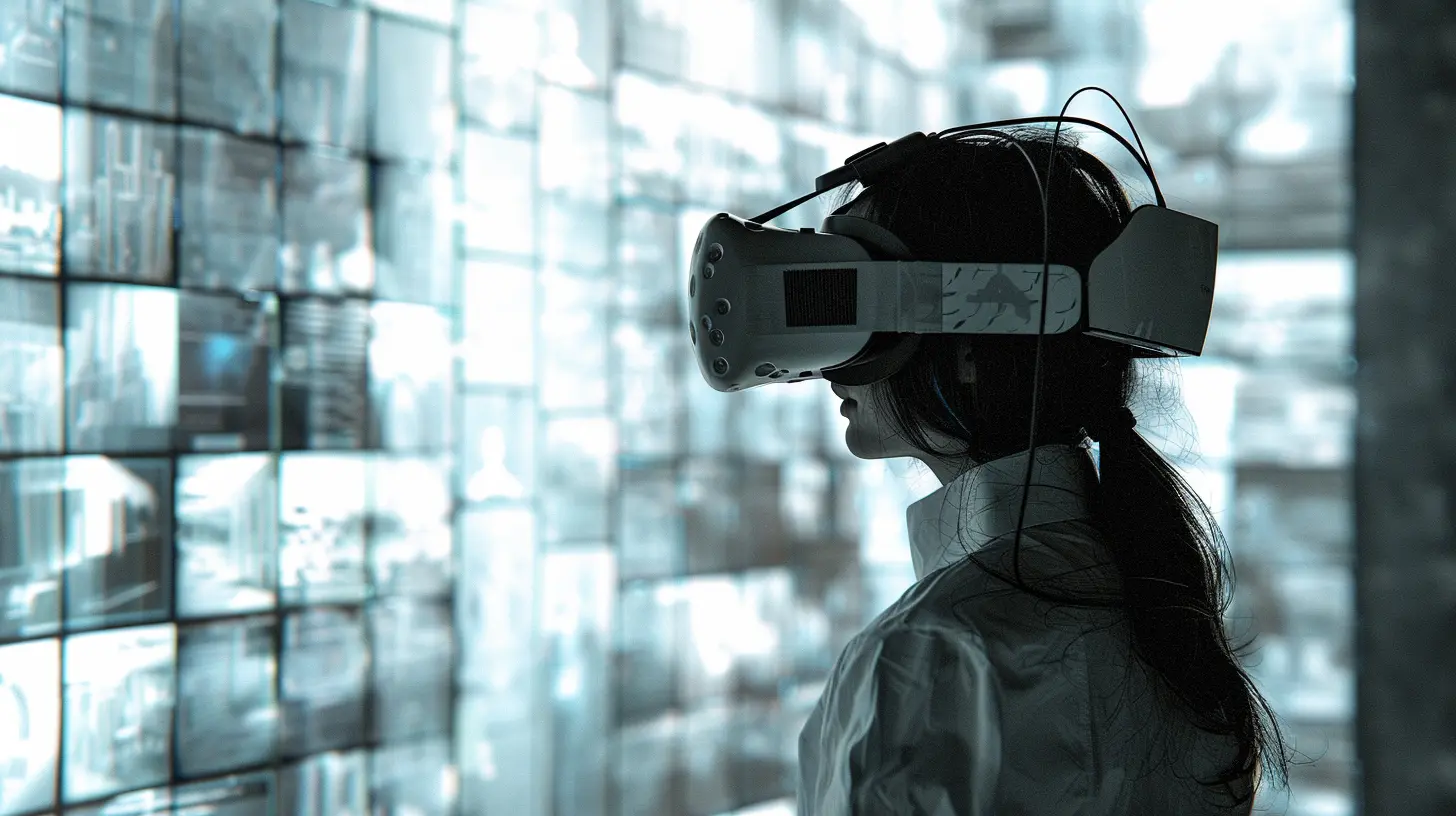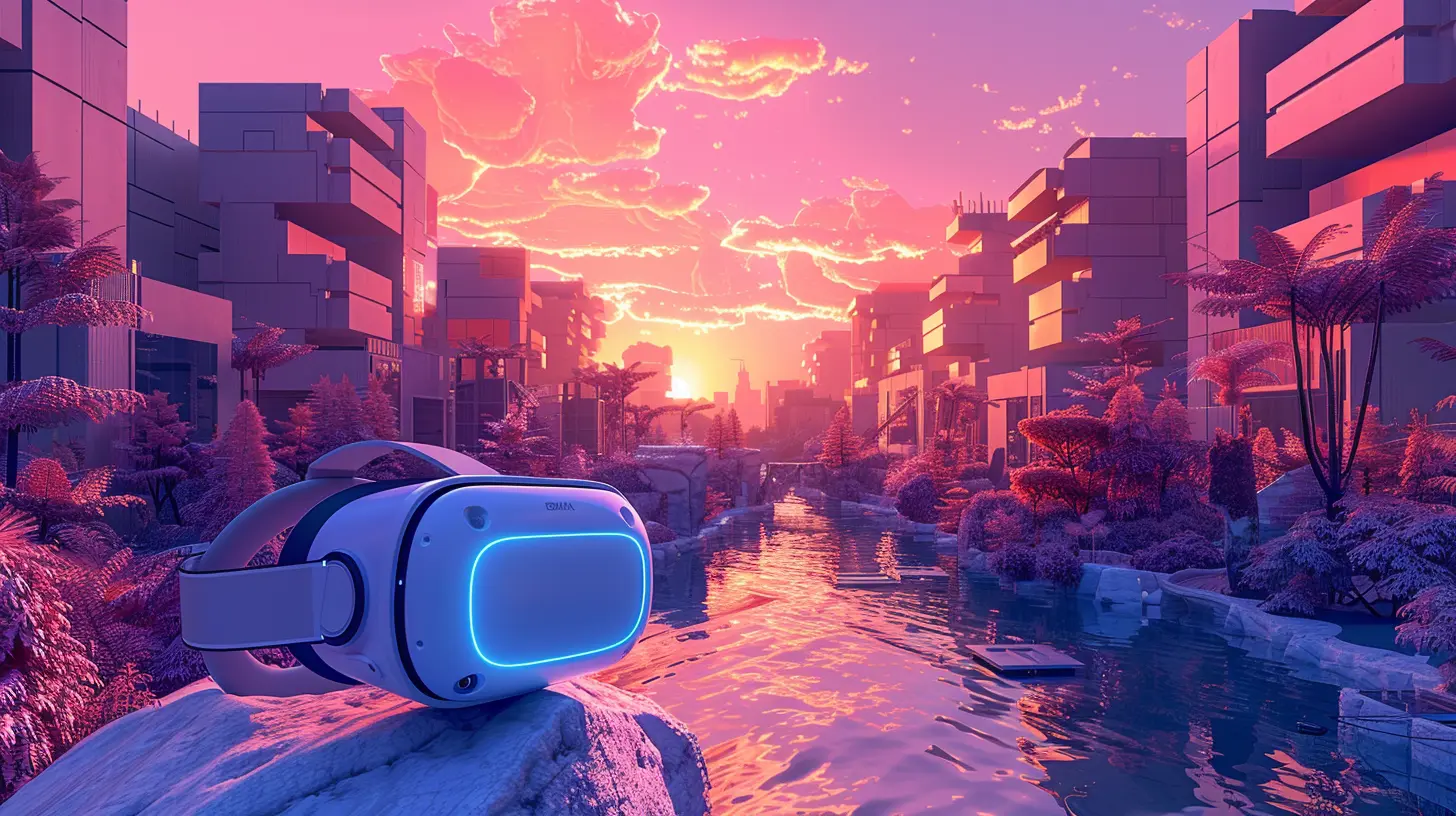Virtual Reality Tools That Are Shaping the Future of Content
12 November 2025
The world of content creation is constantly evolving, and virtual reality (VR) is no longer just a buzzword; it's a revolution. Whether you're a gamer, a filmmaker, or even a marketer, you've likely come across VR in some form. But have you stopped to think about how VR tools are reshaping the way content is created, consumed, and experienced? Well, buckle up, because we're about to dive into the future of content creation with some of the most cutting-edge VR tools out there.
VR isn't just for gaming anymore. It's rapidly becoming one of the most influential technologies in industries like education, entertainment, healthcare, and even real estate. Creators are using VR to craft immersive experiences that engage audiences in ways that were once only possible in science fiction. Let's take a closer look at how virtual reality tools are shaping the future of content and why you should care.

What Exactly Is Virtual Reality?
Before we get into the nitty-gritty, let's break down what VR actually is. In simple terms, VR is a simulated experience that can be similar to or completely different from the real world. It uses computer technology to create a 3D environment where users can interact with objects, people, or scenarios in real-time. You typically need a VR headset, like an Oculus Rift or HTC Vive, and sometimes additional equipment like gloves or hand controllers to fully immerse yourself.But VR isn’t just about gaming or entertainment anymore. It's transforming industries from healthcare to real estate, and for content creators, it's a game-changer. Let’s explore some of the most exciting VR tools that are pushing boundaries and shaping the future of content.

Key VR Tools Shaping the Future of Content Creation
1. Unreal Engine
If you've ever played Fortnite, you’ve already seen what the Unreal Engine is capable of. But did you know that this powerful engine is also used for creating VR content? Unreal Engine is a complete suite of game development tools, but it has also expanded into other industries like architecture, film, and even automotive design.What makes Unreal Engine so special for content creators is its photorealistic rendering capabilities. Whether you're creating a virtual reality game or an interactive VR walkthrough for a new real estate project, Unreal Engine delivers stunning visuals that immerse users like nothing else.
Plus, it’s versatile. It allows creators to develop for multiple VR platforms, including Oculus, HTC Vive, and PlayStation VR, making it one of the most flexible tools for VR content creation. The best part? It’s free to use unless you make over a certain amount in revenue, making it accessible for indie creators and big studios alike.
2. Unity
If you’re into VR development, Unity is another name that should ring a bell. Similar to Unreal Engine, Unity is a real-time 3D development platform widely used for creating VR experiences. Unity's real-time rendering, physics engine, and extensive library of assets make it a go-to for developers looking to create VR content.One of the standout features of Unity is its ease of use, especially for beginners. The platform has an extensive library of tutorials, forums, and plugins that make it easier for creators to dive into VR development. And like Unreal Engine, Unity also supports multiple VR platforms, allowing you to create content that can reach a broader audience.
The Unity Asset Store is a treasure trove of pre-made 3D models, textures, and animations, which can save you tons of time in the development process. Whether you’re building a VR game or an interactive educational tool, Unity has got your back.
3. Tilt Brush by Google
Tilt Brush is one of the most innovative VR tools for artists. Imagine painting in 3D space — that's exactly what Tilt Brush allows you to do. You can create three-dimensional artwork using a VR headset, and the results are nothing short of breathtaking.What makes Tilt Brush exciting for content creators is that it opens up new avenues for storytelling and expression. Traditional 2D art is limited by the boundaries of a flat surface, but with Tilt Brush, you can literally walk around your creations, adding layers, textures, and elements that you simply can't achieve with standard tools.
Artists and designers can use this tool to create immersive environments, concept art, or even live VR performances. It's an entirely new medium for creativity, and as more people adopt VR, we'll likely see this tool being used in ways we can't even imagine right now.
4. Adobe Substance 3D
Adobe is a name synonymous with content creation, and their Substance 3D suite is pushing VR content to the next level. Substance 3D is a set of tools used for 3D texturing and material creation, which is crucial when you're building realistic VR environments. Whether you're working on a VR game, film, or even a virtual event, having high-quality textures and materials can make or break the immersive experience.The Substance 3D suite includes tools like Substance Painter, Substance Designer, and Substance Alchemist. Together, these tools allow creators to design textures and materials that look and feel real — from the roughness of a brick wall to the sheen of a metal surface. And because it's from Adobe, it integrates seamlessly with other tools like Photoshop and After Effects, making the workflow a breeze.
5. Gravity Sketch
Designers, architects, and 3D modelers, this one’s for you. Gravity Sketch is a VR tool that allows creators to sketch and model in 3D space. It's like having a virtual design studio where you can build anything from concept cars to architectural layouts.Gravity Sketch is particularly revolutionary for product designers and architects because it allows you to walk around your creation in virtual space. This gives you a much better sense of scale and proportion than traditional 2D sketches or even screen-based 3D modeling programs.
The tool is also collaborative, so multiple users can join a shared VR space to work on a design together in real-time. Imagine being able to host a virtual design review with team members located all around the world — no plane tickets required!
6. Quill by Oculus
Quill is a VR illustration and animation tool developed by Oculus, and it's making waves in the world of storytelling. While Tilt Brush is more focused on static artwork, Quill allows creators to take things a step further, adding animation to their VR creations.The tool is intuitive, allowing artists to create frame-by-frame animations directly in a 3D space. This opens up endless possibilities for immersive storytelling. Imagine watching a short film where you’re not just a passive observer but an active participant. You can walk around the characters, see the story unfold from different angles, and truly feel like you're part of the narrative.
For content creators focused on animation or storytelling, Quill offers a unique way to engage audiences in more immersive and interactive experiences.
7. Blender
Blender is a free, open-source 3D creation tool that is incredibly versatile, and yes, it supports VR. Blender is widely used in industries like gaming, film, and even scientific visualization, thanks to its robust features like 3D modeling, texturing, rigging, and animation.What makes Blender particularly exciting for VR content creators is its compatibility with VR headsets. You can preview your 3D models and animations in virtual reality, allowing you to fine-tune the details and ensure the final product feels immersive.
Given that Blender is free and open-source, it’s accessible to creators of all levels. Whether you're an indie developer working on a passion project or part of a larger studio, Blender offers the tools you need to create stunning, VR-ready content.
8. Mozilla Hubs
Mozilla Hubs is an open-source VR platform that allows users to create virtual spaces and collaborate in real-time. You don't need to be a coding expert to use Hubs, which makes it a fantastic tool for content creators who want to build interactive environments without getting too technical.You can host virtual meetings, art galleries, or even concerts in these virtual spaces. The best part? It's browser-based, so users don't need to download any special software to join your VR experience. This lowers the barrier to entry and ensures that your content can reach a wider audience.
Mozilla Hubs is a prime example of how VR tools can be used to foster collaboration and community-building in a virtual space, and it's only going to get better as the technology evolves.

Why Virtual Reality Is the Future of Content
So, why is VR shaping the future of content creation? Simply put, it offers something traditional media can't: total immersion. Instead of watching a story unfold on a screen, VR allows you to step inside the story. Instead of looking at a product online, VR lets you "try" it before you buy. That level of interaction and immersion is unparalleled.As technology continues to improve, VR will become more accessible and affordable, which means more creators will start using these tools to bring their visions to life. Whether you're a filmmaker, a marketer, or an educator, VR offers new ways to engage your audience and deliver experiences they'll never forget.

Final Thoughts
Virtual reality is no longer a niche technology. It's here, and it's shaping the future of content creation in exciting ways. Tools like Unreal Engine, Unity, and Tilt Brush are empowering creators to build immersive worlds, tell engaging stories, and interact with audiences in ways that were unimaginable just a few years ago.The future of content is immersive, interactive, and limitless, and VR is at the forefront of this revolution. Are you ready to jump in?
all images in this post were generated using AI tools
Category:
Content Creation ToolsAuthor:

Michael Robinson

